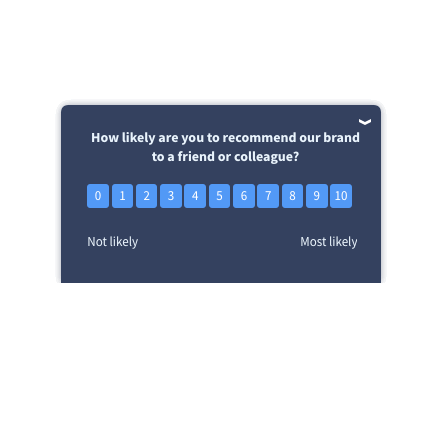Criticism is the best gift your company can receive.
Sounds weird? It isn’t.
However, it must be constructive to benefit your business.
Criticism can be part of quality end-user feedback that includes both positive and negative reviews. Yet, only actionable feedback is useful when you are assessing business performance and making decisions on how to improve it.
What Is Actionable Feedback?
It’s the kind of feedback that produces results that are appropriate and tangible; results that you can learn from.
How do you distinguish actionable feedback from unactionable feedback? The latter may express the overall impression that your customer has, without specificity.
For example:
“Wow, amazing app, I love it!”
or
“These snacks are great, they are much better than the others”,
or
“The place is terrible. I do not recommend it to anyone”.
Unactionable or non-insightful feedback shows a problem or the absence of it, but it doesn’t explain what is wrong or what stands out for the customers as compared to competitors. Also, it may contain standard facts for the analyst that could be irrelevant.
For example, a user writes that a certain software feature doesn’t work offline, but such functionality was not even foreseen while the app was being developed due to its irrelevance.
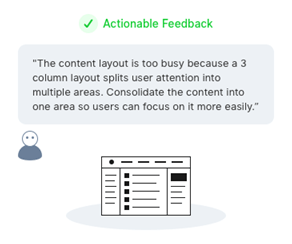
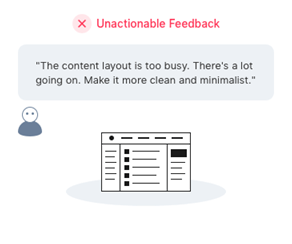
© uxmovement.com
“Feedback is the breakfast of champions.”
~Management Expert and business consultant Ken Blanchard
Following the saying, it’s fair to say that the feedback breakfasts can be different. That’s why it’s so important to learn customer feedback management.
By reading this article, you’ll learn the top six things to consider to learn how to collect insightful feedback, evaluate it, and use unactionable feedback to your advantage.
Let’s begin by unraveling each of these six things in detail.
Watch: How To Collect Customer Feedback
1. Helpful Reviews Are Harder to Get
When a customer feels that there is something good or something bad in how your business operates, they cannot always express it clearly or competently.
To obtain constructive feedback, it is common practice to provide customer satisfaction (CSAT) surveys, in which:
- All customers are surveyed, not just satisfied or dissatisfied.
- Questions range from general to specific.
- Surveys don’t annoy customers.
- Rating system is applied (from 1 to 10 or excellent – good – average – poor).
- Uniform standard is applied to collect, calculate, analyze, and draw conclusions from feedback.
CSAT solution providers like Qualaroo offer useful templates for gathering information from customers quickly, appropriately, and efficiently.
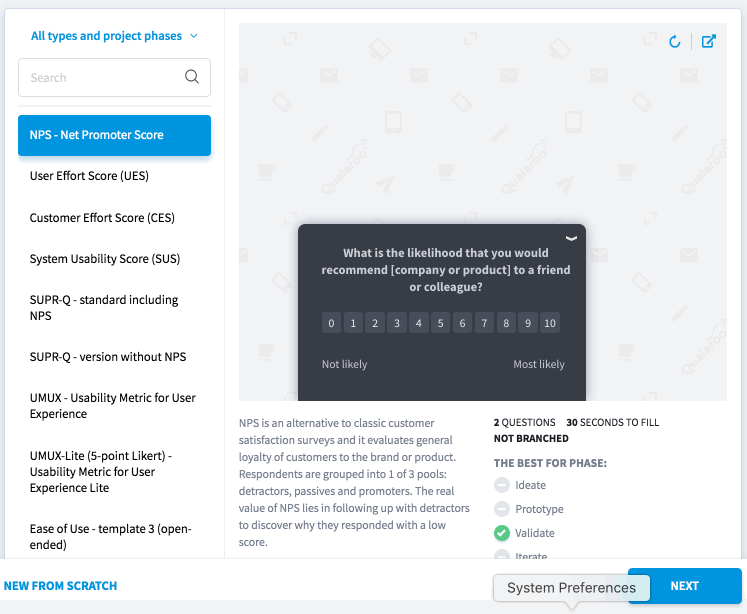
However, the most effective decision is also to add non-standard impressions of the merits and drawbacks of a particular business. Unactionable feedback may become their priceless source.
Unactionable customer feedback is more likely to be negative because customers are less likely to share their positive experiences with a brand. Instead, they tend to share positive experiences with family and friends.
According to customer strategy think-task ThinkJar founder Esteban Kolsky, 72% of customers share their positive experience with 6 or more people, but if the experience is bad, 13% of customers will end up sharing their experience with 15 people or even more!
That’s why it is important to encourage customers to express their positive impressions clearly to get positive advertising as well as more objective prerequisites for collecting actionable feedback.
Ways to collect actionable feedback:
- CSAT surveys
- Targeted polls in emails, chats, apps
- Direct calls
Common sources for collecting unactionable feedback:
- Testimonials
- Comments and reviews on social media
- Brand ratings in app markets
2. A Well-Formulated Question Is a Key to a Valuable Answer
Ask the right way and you shall receive…the right answer, of course!
In general, actionable feedback is more measurable. On the contrary, unactionable feedback tends to be less informative but more insightful and honest. After a thorough analysis, unactionable feedback can be used in further preparation for collecting actionable feedback.
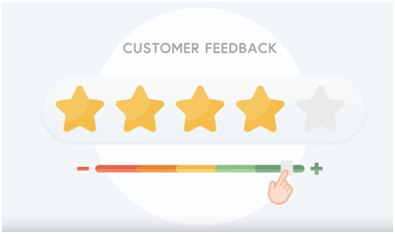
Stars and emoticons are pretty, but not very informative.
©medium.com
For example, if previous customers complained about a particular product, service, or specific details frequently, you can make changes then and ask about your customers’ thoughts.
These steps will help you get started:
1. Find out in general what is wrong from non-insightful feedback
2. Clarify the details of other customers’ dissatisfaction
3. Find out the reasons for the negative experience
4. Eliminate the cause of a problem
5. Ask if the problem has disappeared during the next feedback collection cycle
Sometimes, it’s useful to turn a non-constructive review into a constructive one by asking a clarifying question.
Here are some questions to help you get started.
- What exactly did you dislike about us?
- How would you like us to improve our products/services?
- What’s the one feature we can add that will make your experience better?
- Of these X options, what’s the next feature you think we should add to our product?
- What could we change to make you want to continue using our product?
Here are more survey questions for you to check out.
Here’s how a standard CSAT looks like.
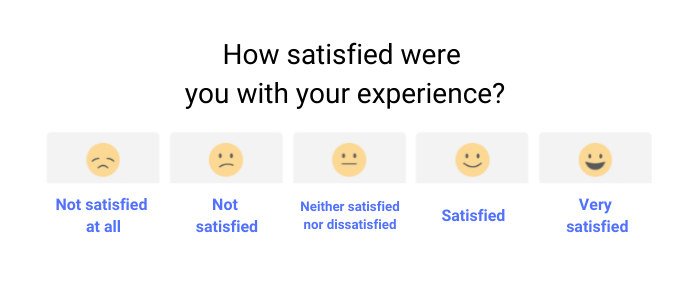
© Boast.io
Watch: How To Measure Customer Satisfaction
3. Don’t Overlook Important Details When Evaluating Customer Experience
When there is little time or few resources to analyze CSAT, it is very important to focus specifically on constructive and actionable feedback.
For example, many customers of the ProEssayWriter service, having received professionally completed essays, scientific articles, or course papers, quickly start praising the results. Often they indicate the ease of applying to service, meeting the urgent deadlines, and affordable prices. However, such feedback is not always actionable.

© proessaywriter.org
The final measure of the high level of custom-made work should also consider the final grade, approval, or profit received after submitting the work to the supervisor, teacher, contractor, etc. Feedback given by satisfied customers after they receive a completed thesis or research paper is more revealing.

Feedback after the delivery of work to the teacher is more representative
© proessaywriter.org
If you want to receive objective feedback, timing matters. Therefore, when you ask customers to share their thoughts right after a product or service is received, the chances are that you will get unbiased first-hand feedback.
Indeed, the speed of the delivery of a pair of shoes can be judged immediately, but you can talk about their quality only after walking more than a mile in them.
FREE. All Features. FOREVER!
Try our Forever FREE account with all premium features!
4. Do Not Overestimate Quantitative Indicators of Analyzed Feedbacks
Actionable feedback that is gained during the survey with strictly outlined quantifiable measures requires a quick, simple, and univocal assessment from a customer. The customer is likely not a marketer and isn’t used to giving marks to the products and services. The average customer is not a mystery shopper and doesn’t have to act like one.
Quantitative data is mostly collected through the following:
- Heatmaps
- Surveys
- Key Performance Indicator analytics
- A/B tests
For some people, it is easier to tell their impressions in words rather than numbers.
In a LinkedIn blog post, Bernard Marr, an international best-selling author, and strategic business & technology advisor argues that sometimes over-obsessing about KPIs and misinterpreting them becomes poison for business.
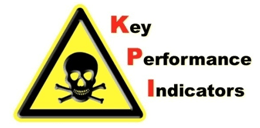
© linkedin.com
The analysts who stay extremely focused on, percentage of satisfied customers, and other KPIs can often say confidently if customers are happy or not. Still, it’s really hard for them to answer what the business should do to keep up the great work or to correct mistakes, attract customer confidence, and retain them.
That is why an ideal survey should contain not only ready-made answers but also leave room for the free expression of the customer’s thoughts.
Here’s how you can use quantitative analytics to define your objectives for feedback
5. When Converting Feedback Into the Actionable One, Seek Objectivity
Unactionable customer feedback tends to be biased because it often gives just one person’s point of view. Also, a characteristic of a product or service noted by one person can be difficult sometimes to assess by a unified standard due to unstructured feedback from other customers.
Biased reviews cannot be considered in actionable survey analysis.
The catch is that certain things that are important for some customers who are even ready to report about them in reviews and comments may be less important for other customers, who do not mention them. However, such insignificant things can still affect the overall impression of the product or service.
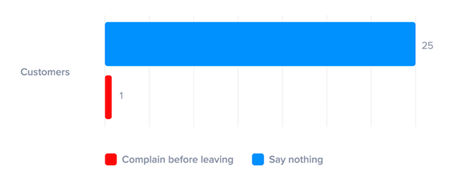
© medium.com
6. The Devil Is in the Details
In many cases, when analyzing feedback, one should separate a customer’s satisfaction with the product and satisfaction with services for its selection by the manager-consultant, delivery, warranty service, etc.
In other cases, different stages of service delivery should be analyzed separately, because they can sometimes depend on different providers and subcontractors.
Feedback can be considered to be constructive, if you can, immediately and without additional research, divide the overall impression of a service or product into the key components.
Actionable Feedback = Smarter Business Decisions
Understanding the difference between actionable and unactionable feedback will help you better manage customer feedback and make smarter business decisions. The bottom line is that unconstructive criticism cannot be used to assess CSAT representatively and, consequently, to provide further adjustment of the business strategy.
Feedback must be actionable for effective conclusions about CSAT. To sum up, it should:
- shed light on previously unknown flaws;
- relate to things that the company can really influence;
- take into account the circumstances under which the impression of the product or service was formed;
- prioritize different aspects of business performance from the customer’s point of view.
This post was written and contributed by Andrew Wilson of Essay Writer.
 Tips
Tips
We’d love to hear your tips & suggestions on this article!
FREE. All Features. FOREVER!
Try our Forever FREE account with all premium features!

 We'd love your feedback!
We'd love your feedback! Thanks for your feedback!
Thanks for your feedback!



